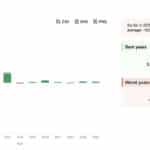(Welcome aboard mate - What took you so long? - AM)
By John Plender
Published: February 4 2009 02:00
Financial times
It is no surprise, then, that investors look increasingly at the reported equity in bank balance sheets rather than Basel numbers. The picture is not pretty. Figures produced by Huw van Steenis of Morgan Stanley for tangible common equity as a percentage of banks' tangible assets, show that the net equity cushion of a dozen or so of the world's biggest banks is less than 3 per cent, and the European banks are notably weaker than the Americans.
In short, a 3 per cent fall in the value of the gross assets of these banks leaves them insolvent, other things being equal. This is deeply worrying because the impact of the financial debacle on the real economy is only beginning to be felt in earnest. This year will see big write-offs on commercial and residential real estate, private equity-owned companies, mortgage backed securities and goodness knows what else.
It may be indelicate to say so, but many of these banks are, realistically, bust. While policymakers are admirably reluctant to extend the process of nationalisation, more public ownership is both inevitable and potentially helpful. For state control can facilitate more lending. It also removes the acute conflict of interest between taxpayers and shareholders regarding finding a value at which bad assets can be extracted from bank balance sheets without favouring one group at the expense of the other.
Wednesday, February 4, 2009
Subscribe to:
Post Comments (Atom)



No comments:
Post a Comment